Windows Complete PC Backup
Windows Complete PC Backup is a completely new
addition to Windows Vista, but is only available in
Windows Vista Business, Enterprise, and Ultimate
editions. This option is not available in Home Basic
or Home Premium editions.
The object of Complete PC Backup is to completely
image your hard drive, including operating system,
installed programs, settings and data files, so that
you have an adequate backup just in case of a fatal
system failure.
While the compression ratio in Complete PC Backup
is somewhat lower than, say, Acronis True Image or
other imaging applications, Complete PC Backup is,
as I've said, free with Windows Vista Business,
Enterprise and Ultimate and is well worth making use
of.
Like most imaging software Complete PC Backup is
wizard based, so you should have no problem creating
an image of your current hard drive.
To start the imaging process just Click the Start
button followed by All Programs then navigate to
Accessories, System Tools and, finally, Click on the
Backup Status and Configuration option (see fig:1).
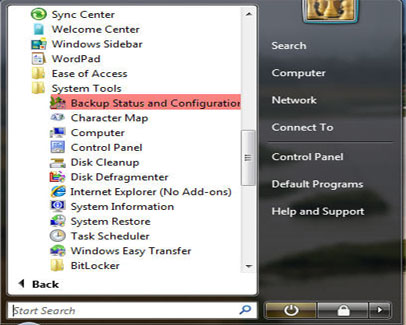
Fig: 1 Start Menu
The Backup Status and Configuration window will
now open. On the left of the window you will see
three options:
- Back Up Files.
- Restore Files.
- Complete PC Back Up.
Click on the Complete PC Backup option (fig:2)
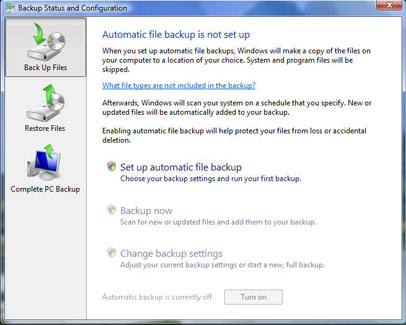
Fig: 2 Click the Complete PC
Backup option to start the backup wizard
After Clicking the Complete PC Backup option
another window will appear. This is the start of the
Complete PC Backup wizard. To get the whole process
started, Click on the Create a back up now option
(fig:3).
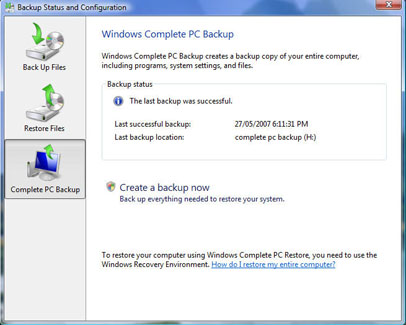
Fig: 3 You need to click the
Create a backup now option to start the backup
process
Once you have Clicked on the Create a back up now
option another window will appear. This asks Where
do you want to save the backup. At first you will
not be able to do anything within this window as the
application will be busy trying to locate any backup
devices (fig:4).
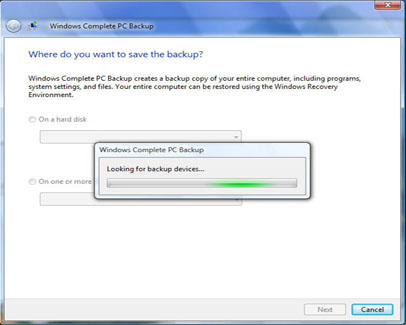
Fig: 4 Looking for back up
devices
After Complete PC Backup has searched for all
available back up devices, you will be able to
choose which device to back up to. As you can see
from figure 5 you have the following options:
- On a hard drive.
- On one or more DVDs.
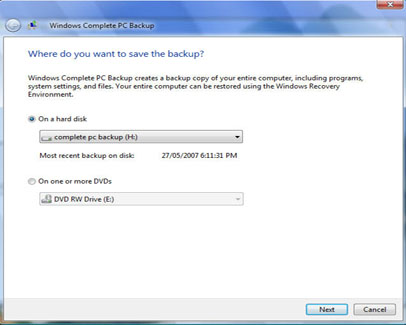
Fig: 5 Select where you want to
save your back up
From the above window, select the destination for
your hard drive back up. If you have more than one
hard drive, you can select the drive you want to
back up to by clicking the arrow to the right of the
on hard disk dialogue box. (see fig: 6).
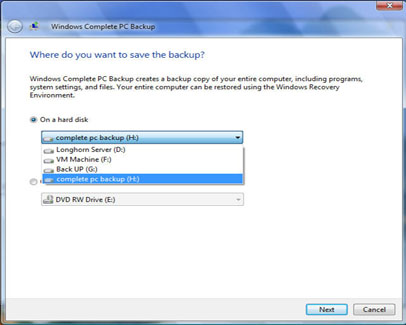
Fig: 6 Click the arrow to the
right of the dialogue box to see further back up
sources available on your PC
As well as showing any additional hard drives the
screen, shown in figure 6, will also display any
available partitions on that hard drive.
If you don't wish to use your hard drive or a
removable hard drive for storing the back up copy of
your system, you can choose to have the data copied
to DVDs instead.
How many DVDs you will require will, ultimately,
depend upon the amount of information that has to be
imaged. Complete PC Backup will indicate and
approximate amount of DVDs need to accomplish the
task. Like most things in life, though, the required
DVDs will only be an 'approximation,' so make sure
you have some spare DVDs to hand, just in case. You
should also ensure that you number each DVD as they
are created. Failure to do so could result in you
not being able to insert the DVDs in the correct
sequence when you eventually need to restore your
system.
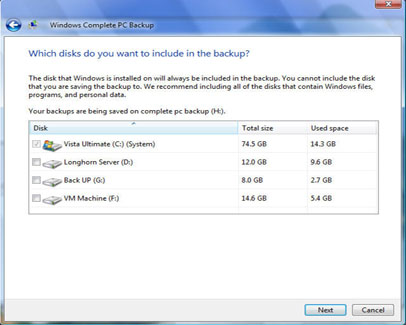
Fig: 7 Select the disk(s) you
want to image
Once you have decided upon the destination for
your back up you then get to choose which disk(s)
you would like to create a backup of (fig:7). You
select the disk(s) you want to image by placing a
check mark in the box to the left of the relevant
disk(s) information.
After selecting the disk(s) you wish to image you
will need to confirm your backup settings (fig:8).
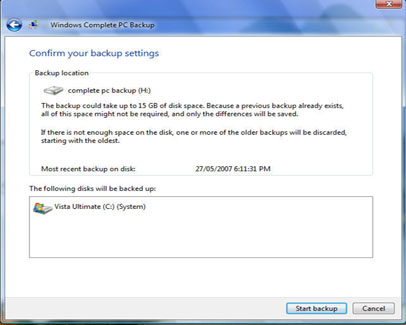
Fig: 8 Confirm your back up
settings
After you have checked that your back up settings
are correct, Click the Start backup button.
The back up process will now begin. How long this
will take will depend upon how much data has to be
transferred. You can monitor the progress of the
back up by checking the progress bar (fig:9).
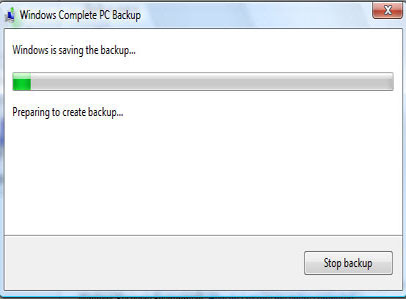
Fig: 9 Back up progress bar
If it becomes necessary to stop the back up at
any stage, simply click the Stop backup button and
the back up will not continue.
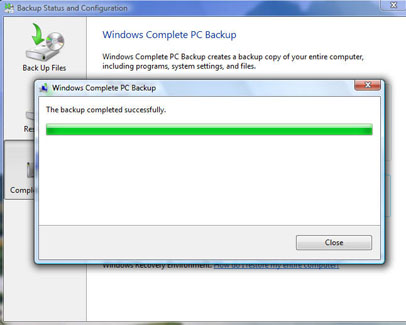
Fig: 10 Back up completed
successfully
As soon as the back up has completed you will see
the backup completed successfully window. Your back
up has now finished. All you need do now is click
the Close button and finally close down the Complete
PC Backup application,
Your back up data is important so make sure you
store it safely. This is particularly true if you
back up to a removable hard drive or a set of DVDs.
To restore your back up you will need to use the
System recovery options menu available on the Vista
DVD. If you do not have the Vista DVD, for example
your PC came pre-installed with Vista, then the PC
manufacturer should have made provisions to access
the system recovery options via a menu at start up.
For more details on how to access the System
recovery options when your copy of Vista came
pre-installed, see your computer's user guide.